
By Anil Söyünmez
WhatsApp marketing
wiki
,Guides
What's a WhatsApp newsletter? Is it the same as an email newsletter? Should your business be sending them? And if so, how? Here's everything you need to know.
 When businesses first started using WhatsApp in 2018, it was mostly seen as a customer support tool.
When businesses first started using WhatsApp in 2018, it was mostly seen as a customer support tool.
Very quickly though, brands realized that WhatsApp offered revenue potential in another area – marketing. And in particular, in the use case of WhatsApp newsletters.
Here's what a WhatsApp newsletter is, why more brands are sending them, and how to get set up to send them.
You'll learn:
What's a WhatsApp newsletter?
A WhatsApp newsletter is a promotional WhatsApp message sent from a brand to its customers. Examples of WhatsApp newsletters are:
- Special offers
- Exclusive discounts
- Product launches
- Competitions
- Seasonal campaigns
- Personalized messages like Birthday greetings
Once a customer has agreed to receiving these messages (ideally with a double opt-in), a brand can send them periodically until a person decides to opt out. Opting out is usually by sending a WhatsApp message saying "STOP" to the business.
What's the difference between WhatsApp and email newsletters?
Most people are familiar with email newsletters. They've been around for 15 years and still remain a key source of revenue for most consumer brands.
However, not so many people are yet familiar with WhatsApp newsletters. They're shorter and snappier than email newsletters, containing only 1 message, and feel very personal.
Some differences between WhatsApp and email newsletters:
| WhatsApp newsletter | Email newsletter | |
|
Content |
Short, snappy, 1 topic per newsletter | Often longer, more text, more images, may cover many different topics in 1 newsletter |
|
Subject line |
🙅 None (but you can add a header) | 🙋 Has one |
|
Pre-header |
🙅 None | 🙋 Has one |
| Notification | Appears on phone homescreen, showing body text | May not be shown on phone (often switched off), will show subject line |
| Metrics |
Revenue per recipient (RPR) Conversion rate |
Revenue per recipient (RPR) Open rate Click-through rate Conversion rate |
| Call to action | Usually only 1 | Usually several |
| Frequency | Best practice is to send no more than 2-3 per month | Sometimes sent as much as 3-4 times per week |
| Segmentation | Rich, using tags added automatically based on order behavior, previous WhatsApp conversations, preferences, location, name and more | Possible but often not enough information about customers to add tags, usually limited to "Male/female" and previous email response behavior |
| Attachments | Photos, gifs, voice messages, pdfs | Photos, gifs, videos, pdfs |
| Attachment visibility | Shown visually above text, easy to see | Usually attached at the bottom of the email, often missed |
| Unsubscribe | Usually "Send STOP" (can be added as footer in every message) | Unsubscribe at the bottom of each email |
| GDPR | Applies in the EU, best practice outside, just as any marketing channel | Applies in the EU, best practice outside |
| Automation | Conversational flows can be automated, with rich interactive functionality thanks to the WhatsApp API | No great degree of 2-way automation, but can set up automated flows, like welcome flows, post-purchase flows |
| Interaction | Highly interactive: can add buttons, lists and automated replies triggered by keywords and allow customers to write replies | Little interactivity. Can click on links to visit website or in-app links and send replies (unless sent from a noreply@ email address) |
Will WhatsApp newsletters replace email newsletters?
We believe they won't.
There's still a place for email newsletters, and we believe this will continue. In fact, after a slump, email is growing more popular as a marketing channel again in recent years.
77% of marketers have seen an increase in email engagement over the last 12 months
The Ultimate List of Email Marketing Stats, Hubspot
The new power couple: email and WhatsApp
Brands sometimes send both email and WhatsApp newsletters. To do this successfully they create a clear marketing strategy to state different purposes for email and WhatsApp.
For example, you might send WhatsApp newsletters for exclusive pre-access to a new product (like Bears with Benefits), or to announce a Black Friday offer.
Then you can use your email newsletters to announce your new season's collection in its full glory, or show sales highlights, with images and links to all your key products.
There are many benefits to both newsletter types. Here's a summary of some of them:
|
Whatsapp newsletter benefits |
Email newsletter benefits |
|
Highly personalized |
Most-used medium |
|
High open rates (as much as 85%) |
Large audiences |
|
Ingrained in daily habits |
Low costs |
|
Interactive formats |
Lots of customer data |
|
Casual, friendly feeling |
A little detached and less intrusive (works well for B2B) |
|
2-way conversations, can encourage responses from customers |
An informational channel, can be use for long reads |
WhatsApp newsletters in the app vs the API
The key difference between WhatsApp newsletters in the WhatsApp Business app compared to the WhatsApp API is mostly the naming.
WhatsApp newsletters in the app: broadcasts
WhatsApp broadcasts are WhatsApp newsletters sent with the WhatsApp Business app. They're sent by small businesses or individual business owners, and can be sent to up to 256 contacts at a time.
You can add "quick replies" so subscribers can click on buttons.
WhatsApp newsletters in the API: campaigns
WhatsApp campaigns are WhatsApp newsletters sent through the WhatsApp Business Platform (API). They're sent by medium to large companies to any number of customers.
There's a high degree of automation, segmentation and interaction possible with the API, which helps businesses get very targeted and creative in WhatsApp.
The benefits of sending newsletters via WhatsApp
There are many benefits of sending WhatsApp newsletters. These include:
- Get noticed: open rates in WhatsApp can be high.
-
Be welcomed: Customers have to opt in to your communications so expect you to message them there.
- Measure responses accurately: there are rich analytics possibilities through the WhatsApp API.
- Reach many people: WhatsApp is a highly popular app with almost 3 billion users. You can reach them without having to create your own app.
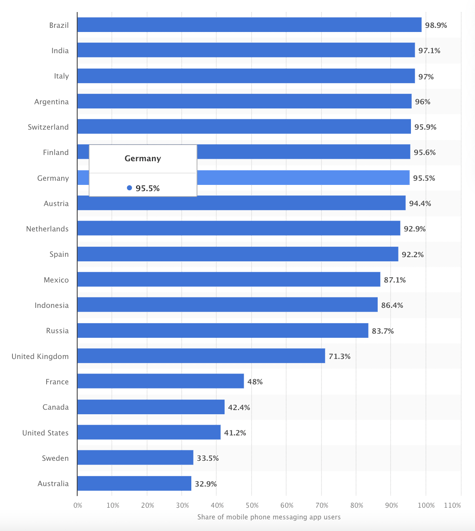
WhatsApp use across the world (source: Statista)
There are many more benefits to using WhatsApp Business to send promotional messages to customers. See more here.
3 WhatsApp newsletter examples
There are many types of WhatsApp newsletter. Whether you want to treat your most loyal shoppers, reach a larger audience, or simply use a more visual way to get in front of your target audience, WhatsApp newsletters can help brands meet many business goals.
Here are 3 ways our customers are using WhatsApp newsletters:
1. Exclusive pre-access: to create hype and loyalty
Energy drink brand HOLY Energy used WhatsApp newsletters to drive higher customer engagement ahead of the launch of its new drink flavor. The brand:
- Announced the upcoming launch via various social media channels
- Enticed customers to sign up to receive an early access code via WhatsApp so they could shop the product exclusively
- Directed WhatsApp subscribers to a dedicated landing page where they could enter the code to access the new product
The results:
- A record 10x higher revenue on launch day
- The brand doubled its subscriber list
2. Pre-purchase assistance: cut the sales cycle
By addressing a customer’s questions and concerns on channels they’re most likely to interact in, you can shorten the sales cycle and turn them into loyal customers faster.
For example, a bed at premium furniture company woodboom typically costs around €1,500, and their customers make about 7 inquiries before they commit to making a purchase - resulting in a 2-4 week sales cycle. The brand wanted to combine their customer-centric style of communication and the conversion power of WhatsApp to deliver a personal experience that also shortens this sales cycle.
Woodboom implemented ways to opt in to WhatsApp: like popups on their website.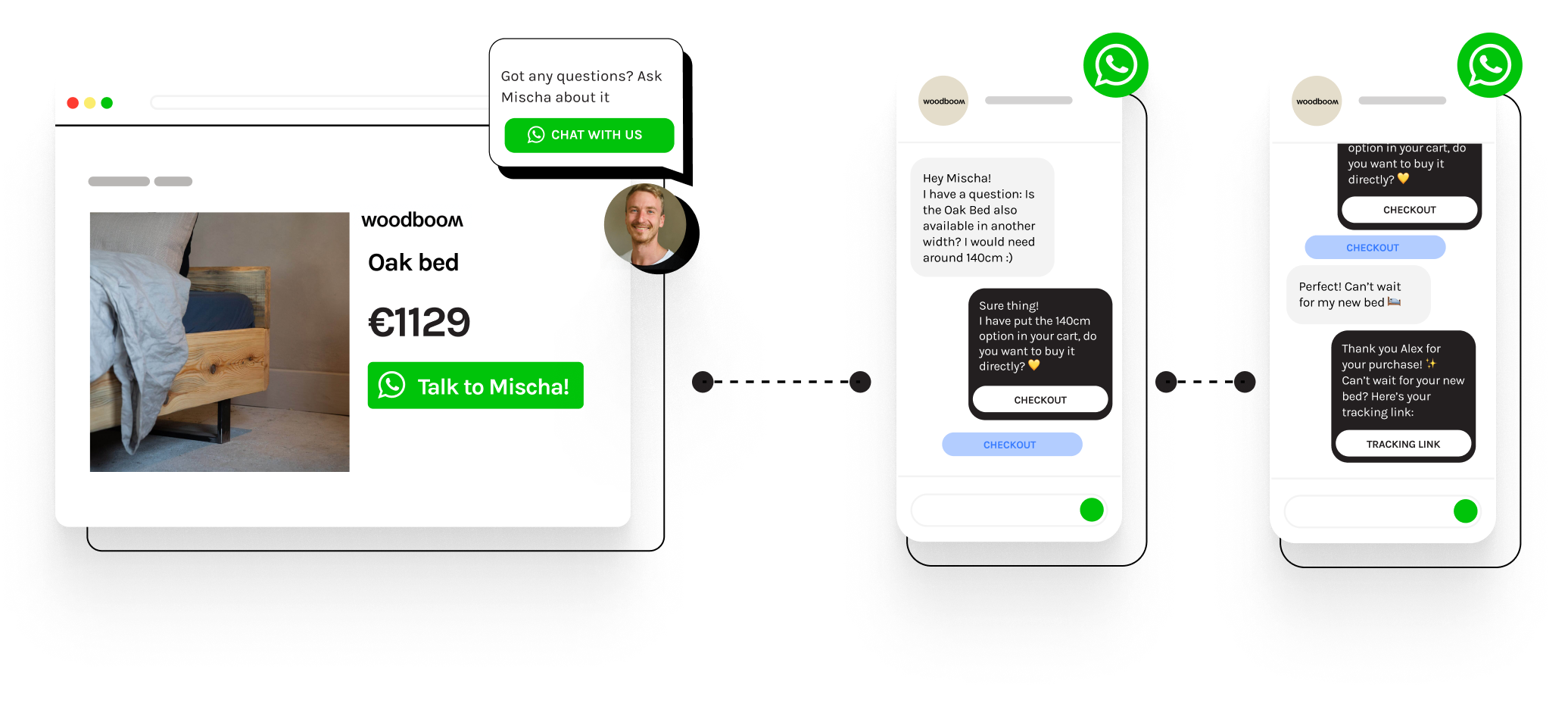
While customers engaged with woodboom via WhatsApp, they also had easy access to checkout buttons to keep their purchase top of mind and remove any barriers to purchase.
By engaging their customers via WhatsApp newsletters, they were able to reduce their sales cycle to 2-4 days, generate 70% of sales via the messaging app. and stay true to their customer-centric roots.
3. Exit intent popups: turn website visitors into WhatsApp subscribers
One of the more popular ways to engage customers before they leave a website is through an exit-intent-popup: a popup triggered if a customer is about to leave the website or is taking a long time making a purchase decision.
These popups often contain special discounts, prompting the customer to leave their email address to receive the discount in their inbox and also stay connected to your brand.
Underwear brand SNOCKS is a perfect example of a brand that turns abandonment into opportunity. To test whether indecisive customers were more receptive to receiving offers via WhatsApp newsletters vs email newsletters, the brand ran an A/B-Test using two exit-intent popups:
- The first offers a 10% discount if customers sign up for the WhatsApp newsletter
- The second offers a similar deal to sign up for email updates
How to start a WhatsApp newsletter
To start a WhatsApp newsletter you need to:
- Get (or build) software: many brands partner with a WhatsApp Business Solution Partner like charles. You can also do so with a Tech Provider or Tech Partner.
- Send campaigns: your partner should help you learn how to best create campaigns – advising on frequency, creativity, segmentation and more
- Optimize: analytics in your WhatsApp platform will help you gauge your newsletters' success so you can continue optimizing and boosting results
WhatsApp newsletter best practice advice
Here's some advice for putting together your WhatsApp newsletters:
- How to format WhatsApp newsletters to catch attention
- 5 secrets of WhatsApp marketing success for Black Friday
- 5 creative WhatsApp newsletter ideas
These other resources are also helpful when setting up a WhatsApp newsletter:
Now's a good time to add WhatsApp newsletters to your marketing mix
WhatsApp newsletters can help you reach new and current customers, build a strong community of brand advocates and convert shoppers faster than traditional email marketing.
Our mission is to bring the potential of WhatsApp newsletters to Europe, so consumer brands here can experience the potential of WhatsApp.
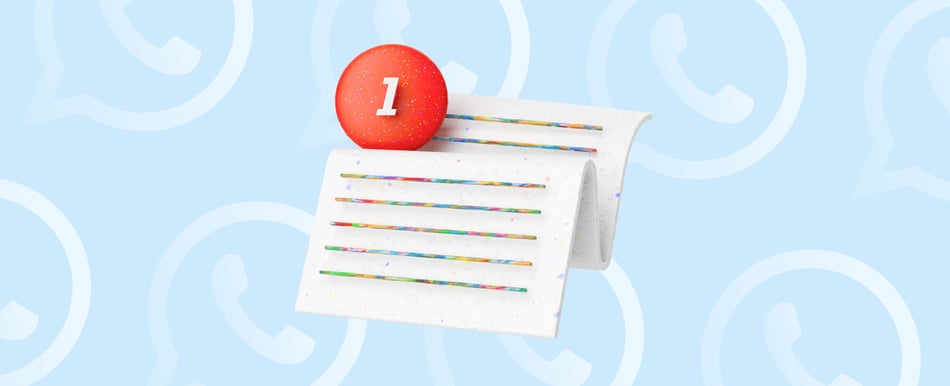

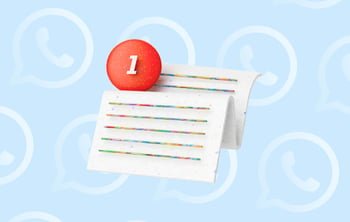
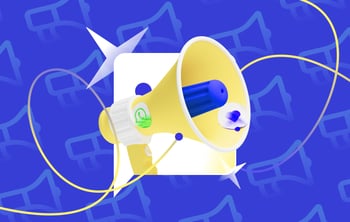
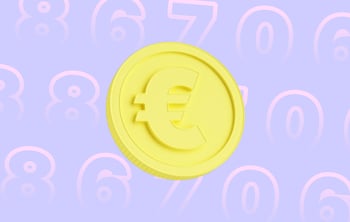
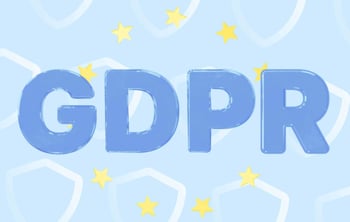
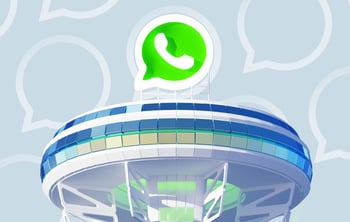
![WhatsApp marketing 101: a guide [+WhatsApp campaign examples]](https://www.hello-charles.com/hs-fs/hubfs/WA%20marketing%20preview%20%281%29.jpg?width=350&height=222&name=WA%20marketing%20preview%20%281%29.jpg)